At night we lay in bed and listened to the howl of the wolf on the hill. In sleep, we saw his shadow slink along the moonlit wall as the great beast circled the town. No one in Gubbio is safe from the monstrous wolf that stalks them. The townsfolk, armed with pitchforks, travel in groups and never venture out at night. One day a band of strangers comes to town led by the Poverello, the poor one. People say he understands the language of bird and beast. Even so, when he offers to go into the forest and face the wolf, everyone is certain he will never return. What happens between the wolf and the Poverello as they stand face to face, is a matter of trust and understanding. But for the people of Gubbio, and one boy in particular, it is nothing short of a miracle. Based on one of the legends of St. Francis of Assisi, the story may contain some truth. During repairs to a chapel in Gubbio dedicated to the saint, a large wolf’s skull was found underneath the flagstones. The Afterword recounts this amazing fact and provides historical details on the life of St. Francis of Assisi.
Folklore and Fairy Tales
The Mummer’s Song
Don’t seem like Christmas if the mummers are not here, Granny would say as she knit in her chair. But on a cold, clear Newfoundland night shortly after Christmas, several outlandishly costumed mummers do appear and Granny’s house suddenly erupts in a burst of joking and tomfollery, raucous singing and exuberant dancing. Granny and her two young charges are instantly caught up in the merriment, When the evening’s festivities come to a close, the mummers are bid a fond farewell until next year.
Popular singer Bud Davidage wrote “The Mummer’s Song” as a tribute to a centuries-old custom in danger of disappearing. Since its publication in 1973, it has fostered a revival of mummering, as noted author and Newfoundland son Kevin Major points out in his afterword. The sparkling illustrations in this picture book adaptation are by the well-known Canadian artist Ian Wallace.
Town Mouse Country Mouse
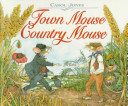
A town mouse and a country mouse exchange visits and discover each is suited to his own home. Peep-holes in some of the pages allow the reader to guess at what happens next.
The Parade
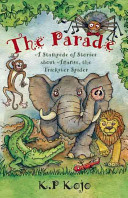
Here are seven Ananse stories from Ghana pulsating with mischievous animals, a touch of moral message and, peeping out wickedly above them all, Ananse the trickster spider. The original title story, The Parade, telling why Ananse became a trickster in the first place, is a worthy opener to six traditional stories including the favourites Ananse and the Sky God and Ananse and the Hat of Beans. For centuries, Ananse stories have been used in Ghana and the Caribbean to entertain children and teach them good behaviour – and with their vibrant sense of fun and cunning, these stories are sure to have enduring appeal.
Hans My Hedgehog
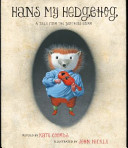
A classic tale of love and acceptance from the Brothers Grimm is beautifully rendered in this magical retelling.Hans is an unusual boy. Born a hedgehog from the waist up, he knows what it’s like to truly be an outcast. Even his amazing fiddle playing can’t help him fit in. So Hans flees to the forest with his herd of loyal pigs and only his music to keep him company. But then a most unusual thing happens: When Hans crosses paths with two kings with two lovely daughters, his luck starts to change. Will this lonely soul find true love after all?This lively and lyrical retelling of the classic Grimm’s tale, paired with lush, detailed illustrations, reminds us of the power of music, the importance of belonging, and the transformative effect of love.
Gifts From The Gods
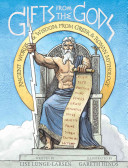
Ancient names come to rich and fascinating life in this lavishly illustrated gift book for mythology fans and word lovers. Did you know that “museums” were initially temples built to worship the nine muses, the goddesses of the arts? That “Janus” was the god of the doorways and hallways, and we have named our janitors after him?Where did these words — and other words, such as chaos, genius, nemesis, panic, echo, and narcissus — come from? From the ancient stories of the Greeks — stories that rang so true and wise that the names of the characters have survived for centuries as words we use every day. The brief stories here not only impart the subtle wisdom of these ancient tales, but make us understand the words, and our own world, more deeply.
The Orphan: A Cinderella Story from Greece
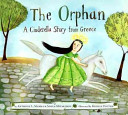
Once upon a time in Greece, fate left a young girl an orphan. Her stepmother was so hateful that she counted every drop of water the orphan drank! But with the help of Nature’s blessings, the orphan was showered with gifts: brilliance from the Sun, beauty from the Moon, gracefulness from the Dawn—and even a tiny pair of blue shoes from the Sea. When the prince comes to visit their village, he only has eyes for the mysterious beauty. Children will love this fanciful folk retelling of the Cinderella story, accompanied by luminous watercolor illustrations by Giselle Potter.
The Gingerbread Boy
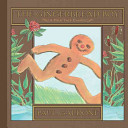
A folk tale classic by Paul Galdone, in a beautiful gift edition with gold foil accents. See if you can keep up with the Gingerbread Boy as he outruns a little old woman, a cow, and even a field full of mowers. With lively illustrations full of spunk and humor, this classic retelling takes readers on an adventure-packed ride with one of literature’s most beloved characters.
The Three Billy Goats Gruff
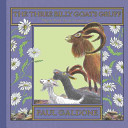
“WHO’S THAT TRIPPING OVER MY BRIDGE?” The three Billy Goats Gruff are hungry and want to go over the bridge and up the hillside to a fine meadow full of grass and daisies where they can eat and eat and eat, and get fat. But under the bridge lives a troll who’s as mean as he is ugly…With humorous, onomatopoeic language, call-and-answer structure, and colorful illustrations, Paul Galdone’s telling of this familiar tale is great for reading aloud with groups.
Goldilocks and the Three Bears
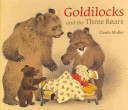
When Goldilocks goes to collect flowers in the wood she gets lost and stumbles upon a pretty house in a clearing. She looks inside and sees a table with three chairs: a big chair, a medium chair and a little chair, and in front of each chair is a steaming bowl of porridge. The porridge smells so good, and Goldilocks is so hungry, that she opens the door and walks inside. But this house belongs to three bears: a big daddy bear, a medium mummy bear and a little baby bear — and they’ll be back soon.This is a beautiful interpretation of a classic story. Gerda Muller’s timeless, intricate illustrations offer wonderful extra detail for children to enjoy. From the very first page, she includes big, medium and little versions of birds, squirrels, mice, plates, umbrellas, slippers, and more. Children and parents will notice new things each time.
